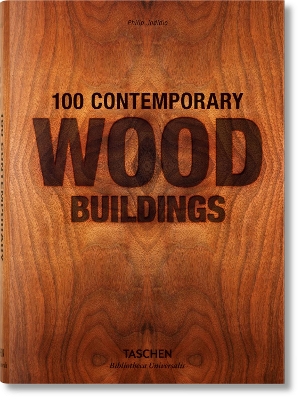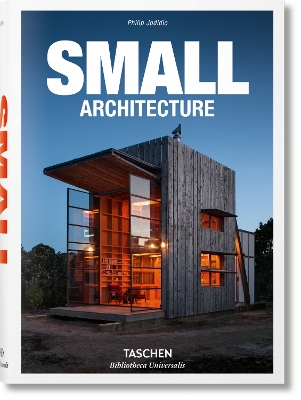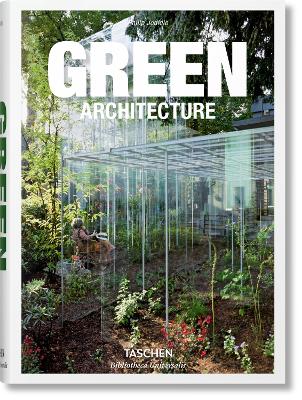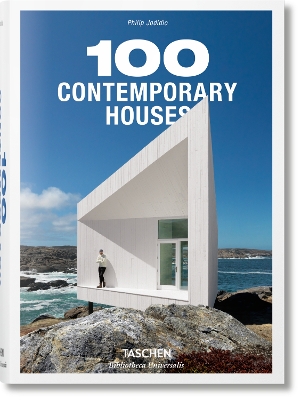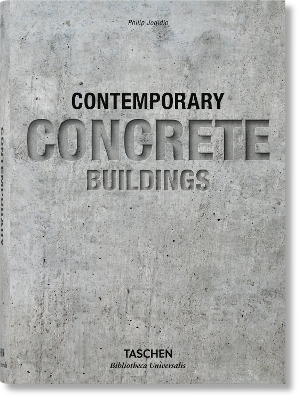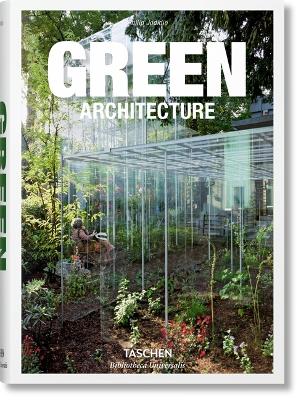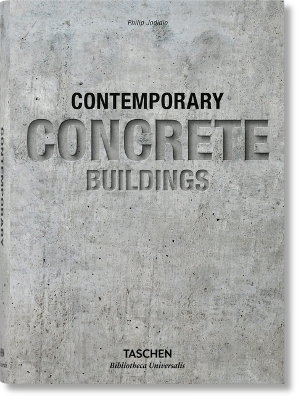Bibliotheca Universalis
9 total works
The idea of climbing a tree for shelter, or just to see the earth from another perspective, is surely as old as humanity. Tree houses are chronicled in ancient civilizations and their lore crosses through the history of every part of the world where trees grow. This stunningly illustrated study offers a tour of the best tree houses in the world, some designed by architects, others the work of unknown craftsmen. A teahouse, a restaurant, a hotel, a playhouse for children, or a perch from which to contemplate life-the tree house can take as many forms as the imagination can offer. In times of concern for sustainability and ecological responsibility, the tree house may also be the ultimate symbol of life in symbiosis with nature. Whether rustic or contemporary in style, tree houses make the most of space. Climb into this trove of tree houses and enjoy a new perspective on the world. 50 tree houses from around the world
Covers all different styles, from romantic to modern
Every house is depicted in several photos as well as one illustration by artist Patrick Hruby from Los Angeles (who also created the book's cover artwork)
Helpful short biographies of all architects
Not so very long ago, some might have considered wood a material of the past, long since replaced by more modern components such as concrete and steel. The truth is radically different. Bolstered by new manufacturing techniques and ecological benefits, wood has seen a fabulous resurgence in contemporary construction.
This Bibliotheca Universalis edition explores how architects around the world have created and invented with this elementary material. Featuring follies, very large buildings, and ambitious urban renewal schemes, it celebrates the diverse deployment of wood by architects around the world. We see how wood can at once transform urban spaces, as in the Metropol Parasol in Seville by Jurgen Mayer H., and allow for sensitive interventions in natural environments, such as at the Termas Geometricas Hot Springs Complex in Pucon, Chile, by German del Sol.
True to all TASCHEN architecture titles, the book pays tribute to many emerging international talents as well as to such renowned figures as Tadao Ando and Renzo Piano. It celebrates each architect's vision and innovation, as well as investigating the techniques, trends, and principles that have informed their work with wood. It examines the computer-guided milling that has allowed for novel new forms, the responsible harvesting that allows wood to align with our environmental concerns, and, above all, wood's enduring appeal to our senses and psyche, comforting hectic modern lives with a sense of Arcadian simplicity.
About the series
Bibliotheca Universalis - Compact cultural companions celebrating the eclectic TASCHEN universe!
Over the years, talented architects have occasionally indulged themselves with the challenge of designing small but perfectly formed buildings. Today, with reduced budgets, many architects have turned in a more focused way to creating works that may be diminutive in their dimensions, but are definitely big when it comes to trendsetting ideas. Whether in Japanese cities, where large sites are hard to come by, or at the frontier between art and architecture, small buildings present many advantages, and push their designers to do more with less.
A dollhouse for Calvin Klein in New York, a playhouse for children in Trondheim, vacation cabins, and housing for victims of natural disasters are all part of the new rush to develop the great small architecture of the moment. The 2013 Pritzker Prize winner Toyo Ito is here, but so are emergent architects from Portugal, Chile, England, and New Zealand. From world-famous names to the freshest new talent, come discover architectural invention on a whole new, small scale.
About the series
Bibliotheca Universalis - Compact cultural companions celebrating the eclectic TASCHEN universe!
The most exciting new buildings today are almost all environmentally aware, sustainable, and conceived to consume less energy than ever before. Discover the best examples of green projects from the Architecture Now! series in this handy Bibliotheca Universalis edition.
Celebrated architects like Frank Gehry and Norman Foster are presented alongside young up-and-coming creators from all over the world. Filled with plans, renderings of proposed projects, and stunning architectural photography, this is nothing short of an encyclopedia of eco-design.
From a water treatment facility to an art museum, luxurious holiday homes to commercial structures, these buildings all make a bold environmental statement. Being "green" means being aware of the responsibility in the construction and use of modern buildings; some solutions are as old as the history of architecture, while others are born of cutting-edge technologies. Explore these approaches and many more in this groundbreaking collection showcasing 100 of the world's most innovative eco-friendly buildings.
About the series
Bibliotheca Universalis - Compact cultural companions celebrating the eclectic TASCHEN universe!
Concrete? That characterless stuff of parking lots or Communist tower blocks, right? Well, yes. And no. Concrete is actually a name applied to a remarkably wide range of building substances, and, when properly handled, is one of the noble materials of contemporary architecture. A kind of "liquid stone" at the outset, it is malleable, durable, and capable of prodigious feats of engineering.
This two-volume book highlights the best work done in concrete of recent years. It includes such stars as Zaha Hadid, Herzog & de Meuron, and Steven Holl, but also surprising new architects like the Russians SPEECH, and rising stars of the international scene like Rudy Ricciotti from France, as well as artists such as James Turrell, who turned the famous concrete spiral of Frank Lloyd Wright's Guggenheim in New York into the setting of one of his most remarkable pieces.
Designing private residences has its own very special challenges and nuances for the architect. The scale may be more modest than public projects, the technical fittings less complex than an industrial site, but the preferences, requirements and vision of particular personalities becomes priority. The delicate task is to translate all the emotive associations and practical requirements of "home" into a workable, constructed reality.
This publication rounds up 100 of the world's most interesting and pioneering homes designed in the past two decades, featuring a host of talents both new and established, including John Pawson, Richard Meier, Shigeru Ban, Tadao Ando, Zaha Hadid, Herzog & de Meuron, Daniel Libeskind, Alvaro Siza, and Peter Zumthor. Accommodating daily routines of eating, sleeping, and shelter, as well as offering the space for personal experience and relationships, this is architecture at its most elementary and its most intimate.
About the series
Bibliotheca Universalis - Compact cultural companions celebrating the eclectic TASCHEN universe!
Concrete? That characterless stuff of parking lots or Communist tower blocks, right? Well, yes. And no. Concrete is actually a name applied to a remarkably wide range of building substances, and, when properly handled, is one of the noble materials of contemporary architecture. A kind of “liquid stone” at the outset, it is malleable, durable, and capable of prodigious feats of engineering.
This Bibliotheca Universalis edition highlights the best work done in concrete of recent years. It includes such stars as Zaha Hadid, Herzog & de Meuron, and Steven Holl, but also surprising new architects like the Russians SPEECH and artists such as James Turrell, who turned the famous concrete spiral of Frank Lloyd Wright’s Guggenheim in New York into the setting of one of his most remarkable pieces.
About the series
Bibliotheca Universalis — Compact cultural companions celebrating the eclectic TASCHEN universe!

